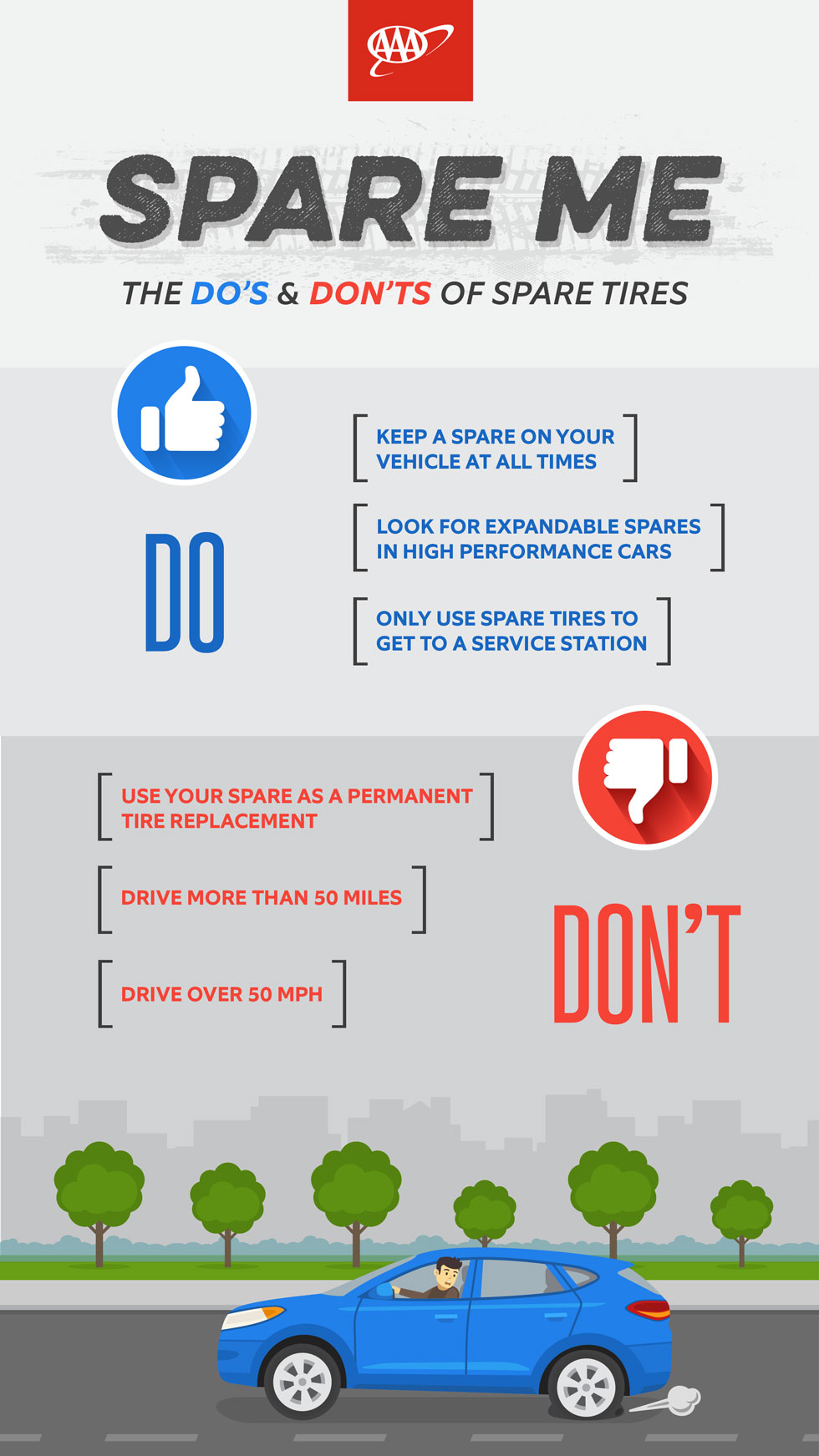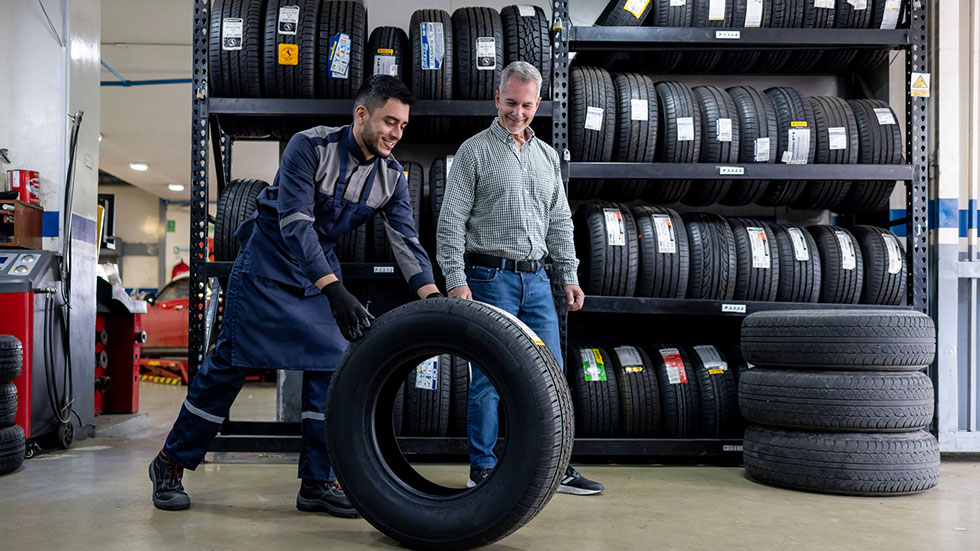

Part of being a responsible driver is understanding how to safely handle your vehicle in different situations. Whether it's driving the back roads of a detour or making sure your roadside emergency kit has all the proper supplies, responsible drivers should be prepared for whatever the road has in store for them.
Spare tires are an important vehicle component that require regular attention to ensure they're safe and ready to use at a moment's notice. In this article, we'll take a look at some of the different types of spare tires and some general rules for driving on spare tires.

WHAT ARE THE DIFFERENT TYPES OF SPARE TIRES?
Although spare tires have historically been a standard feature on vehicles, in recent years fewer and fewer manufacturers include them, opting instead for a lighter, flat-repair kit. By removing the spare tire, manufacturers are able to lighten the overall vehicle weight and improve gas mileage.
Larger vehicles like Jeeps, pickups, or SUVs, usually have a full-size spare tire that often matches the make and tread pattern of existing tires. These types of spares allow drivers to continue traveling with little or no difference in performance and handling.
However, most vehicles have smaller, lighter tires that can be used in the event of a flat tire. They're often referred to as "donuts" or "space saver spares" and their sole purpose is to enable you to get your vehicle to a service station.
In some high-performance sports cars and luxury vehicles where weight reduction, performance, and handling are the most important features, there’s not a lot of room left for a spare tire. These vehicles often come equipped with an expandable spare tire which can be mounted to a rim and inflated with the accompanying air compressor. These types of spares are also meant to aid you in getting your car to a service station.

HOW FAR CAN I DRIVE ON A SPARE TIRE?
Inflatable spares and donut spares are not meant to be a permanent solution for your flat tire. These types of spares have thinner sidewalls and a simpler tread pattern. Because they are less durable, temporary spares not designed to handle adverse road conditions or operate the same as full-size tires.
As a rule of thumb, you should not drive on a temporary spare tire for more than 50 miles.

HOW FAST CAN I DRIVE ON A SPARE TIRE?
Temporary spare tires aren’t built to handle the day-to-day driving rigors of a regular, full-size tire. As such, driving on a spare for an extended period of time can increase wear and tear on various components of your vehicle, including the steering, wheel alignment, and more. Drivers should always keep speeds at 50 miles per hour or less while driving on a temporary spare tire.
